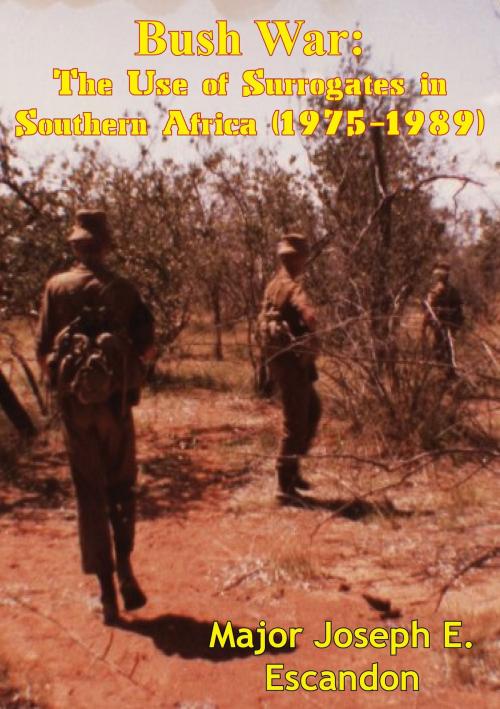Bush War: The Use of Surrogates in Southern Africa (1975-1989)
Nonfiction, History, Middle East, Persian Gulf War, Military| Author: | Major Joseph E. Escandon U.S. Army | ISBN: | 9781782899730 |
| Publisher: | Tannenberg Publishing | Publication: | November 6, 2015 |
| Imprint: | Tannenberg Publishing | Language: | English |
| Author: | Major Joseph E. Escandon U.S. Army |
| ISBN: | 9781782899730 |
| Publisher: | Tannenberg Publishing |
| Publication: | November 6, 2015 |
| Imprint: | Tannenberg Publishing |
| Language: | English |
The purpose of this monograph is to examine the use of indigenous surrogates by both the Republic of South Africa and Rhodesia in Southern Africa’s Bush Wars from 1975 to 1989. The Bush Wars are of significance because the use of surrogates in each case represents policy and doctrine that is outside of the United States military’s traditional understanding and employment of surrogates.
The methodology of this paper is to analyze two unique surrogate forces to determine if they significantly contributed to the accomplishment of strategic aims and operational objectives. Such an examination is relevant because current U.S. policy and strategy advocates building the capacity of foreign security forces, as well as the use of irregular surrogate forces, to achieve U.S. foreign policy objectives.
Given the political and military challenges of Iraq and Afghanistan, policymakers believe that the United States can ill afford another long-duration, resource intensive, politically charged counterinsurgency campaign. The use of surrogates offers the promise of low-visibility, economy of force operations. Nonetheless, enthusiasm for the use of surrogates must be tempered by the reality that surrogates are not a substitute for effective operational art and strategy.
The purpose of this monograph is to examine the use of indigenous surrogates by both the Republic of South Africa and Rhodesia in Southern Africa’s Bush Wars from 1975 to 1989. The Bush Wars are of significance because the use of surrogates in each case represents policy and doctrine that is outside of the United States military’s traditional understanding and employment of surrogates.
The methodology of this paper is to analyze two unique surrogate forces to determine if they significantly contributed to the accomplishment of strategic aims and operational objectives. Such an examination is relevant because current U.S. policy and strategy advocates building the capacity of foreign security forces, as well as the use of irregular surrogate forces, to achieve U.S. foreign policy objectives.
Given the political and military challenges of Iraq and Afghanistan, policymakers believe that the United States can ill afford another long-duration, resource intensive, politically charged counterinsurgency campaign. The use of surrogates offers the promise of low-visibility, economy of force operations. Nonetheless, enthusiasm for the use of surrogates must be tempered by the reality that surrogates are not a substitute for effective operational art and strategy.





![Cover of the book Key To The Sinai: The Battles For Abu Agelia In The 1956 And 1967 Arab Israeli Wars [Illustrated Edition] by Major Joseph E. Escandon U.S. Army](https://www.kuoky.com/images/2014/august/300x300/9781782895794-016v_300x.jpg)
![Cover of the book Spitfire! The Experiences Of A Fighter Pilot [Illustrated Edition] by Major Joseph E. Escandon U.S. Army](https://www.kuoky.com/images/2015/november/300x300/9781786257529-H3d2_300x.jpg)
![Cover of the book Airborne Operations In World War II, European Theater [Illustrated Edition] by Major Joseph E. Escandon U.S. Army](https://www.kuoky.com/images/2015/november/300x300/9781786252975-y4Y7_300x.jpg)


![Cover of the book R.F.C. H.Q. 1914-1918 [Illustrated Edition] by Major Joseph E. Escandon U.S. Army](https://www.kuoky.com/images/2015/november/300x300/9781786255235-1tJm_300x.jpg)




![Cover of the book American Airpower Comes Of Age—General Henry H. “Hap” Arnold’s World War II Diaries Vol. II [Illustrated Edition] by Major Joseph E. Escandon U.S. Army](https://www.kuoky.com/images/2015/november/300x300/9781786251527-cvaI_300x.jpg)